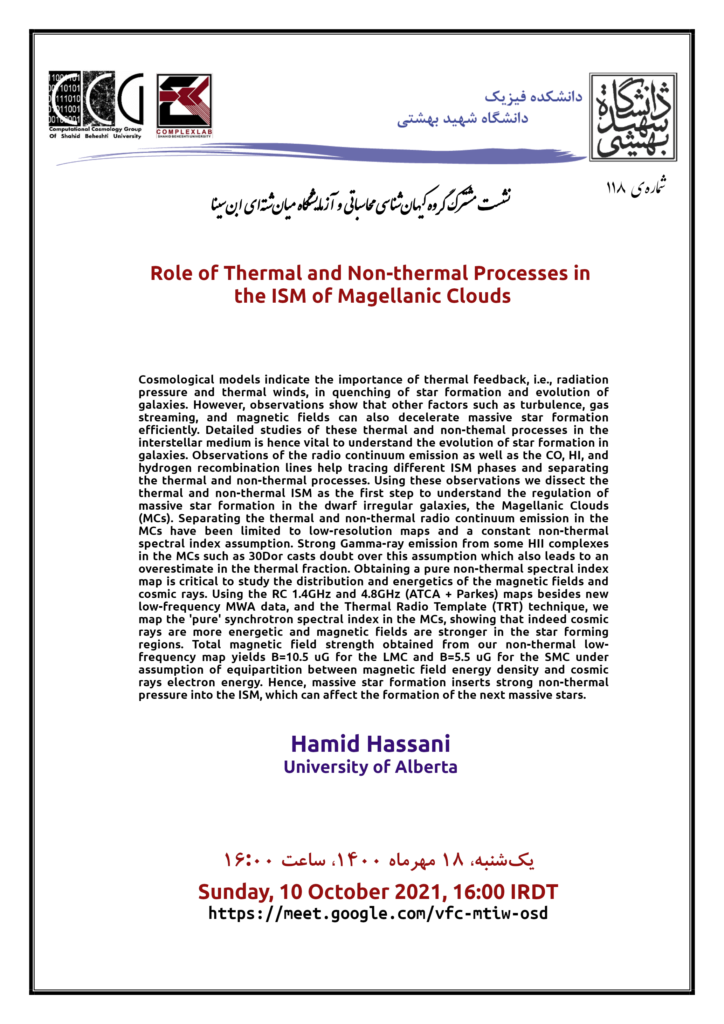
Hamid Hassani
University of Alberta
یکشنبه، ۱۸ مهرماه ۱۴۰۰، ساعت ۱۶:۰۰
Sunday, 10 October 2021, 16:00 IRDT
https://meet.google.com/vfc-mtiw-osd
Abstract:
Cosmological models indicate the importance of thermal feedback, i.e., radiation pressure and thermal winds, in quenching of star formation and evolution of galaxies. However, observations show that other factors such as turbulence, gas streaming, and magnetic fields can also decelerate massive star formation efficiently. Detailed studies of these thermal and non-themal processes in the interstellar medium is hence vital to understand the evolution of star formation in galaxies. Observations of the radio continuum emission as well as the CO, HI, and hydrogen recombination lines help tracing different ISM phases and separating the thermal and non-thermal processes. Using these observations we dissect the thermal and non-thermal ISM as the first step to understand the regulation of massive star formation in the dwarf irregular galaxies, the Magellanic Clouds (MCs). Separating the thermal and non-thermal radio continuum emission in the MCs have been limited to low-resolution maps and a constant non-thermal spectral index assumption. Strong Gamma-ray emission from some HII complexes in the MCs such as 30Dor casts doubt over this assumption which also leads to an overestimate in the thermal fraction. Obtaining a pure non-thermal spectral index map is critical to study the distribution and energetics of the magnetic fields and cosmic rays. Using the RC 1.4GHz and 4.8GHz (ATCA + Parkes) maps besides new low-frequency MWA data, and the Thermal Radio Template (TRT) technique, we map the ‘pure’ synchrotron spectral index in the MCs, showing that indeed cosmic rays are more energetic and magnetic fields are stronger in the star forming regions. Total magnetic field strength obtained from our non-thermal low-frequency map yields B=10.5 uG for the LMC and B=5.5 uG for the SMC under assumption of equipartition between magnetic field energy density and cosmic rays electron energy. Hence, massive star formation inserts strong non-thermal pressure into the ISM, which can affect the formation of the next massive stars.
